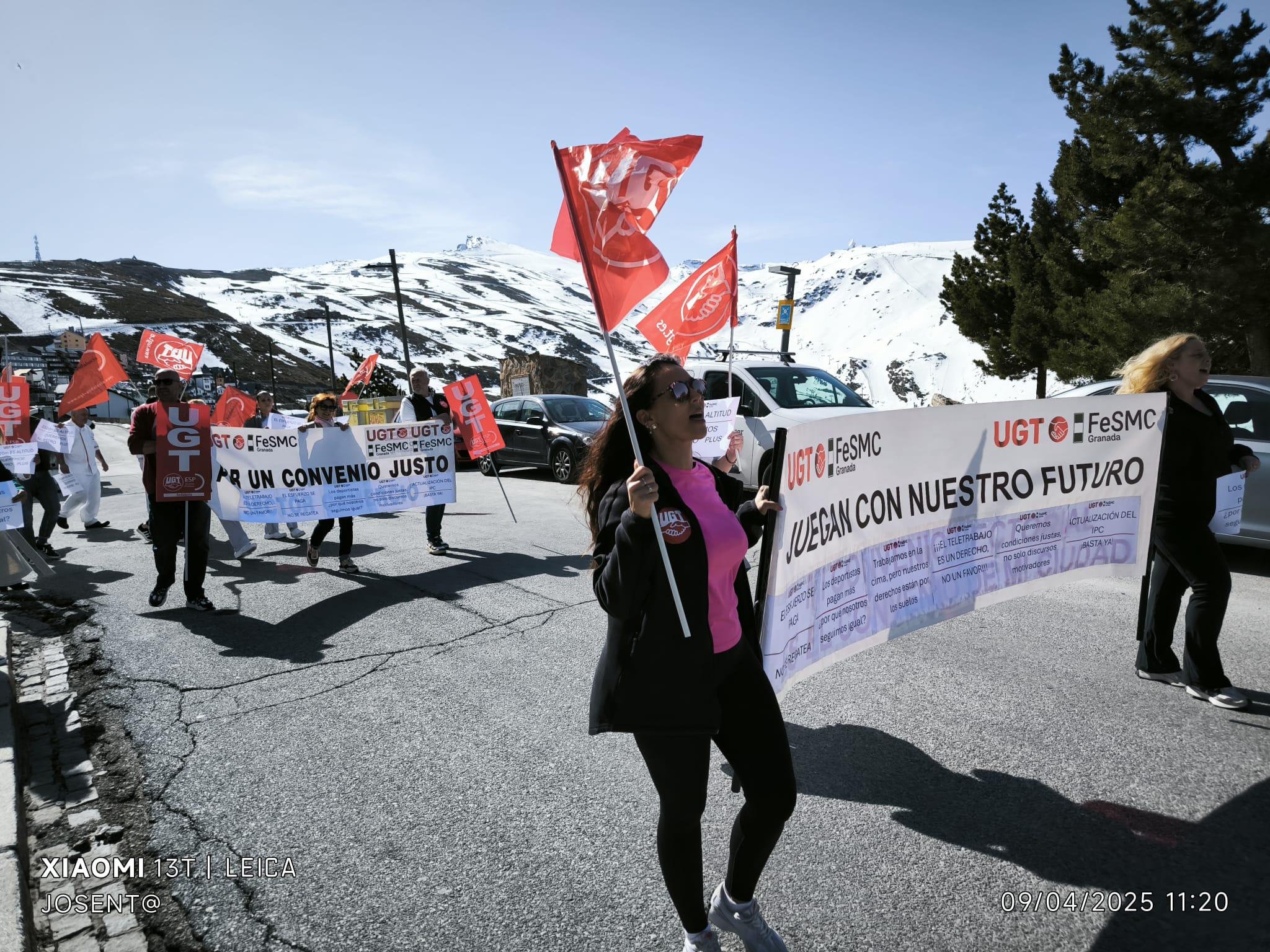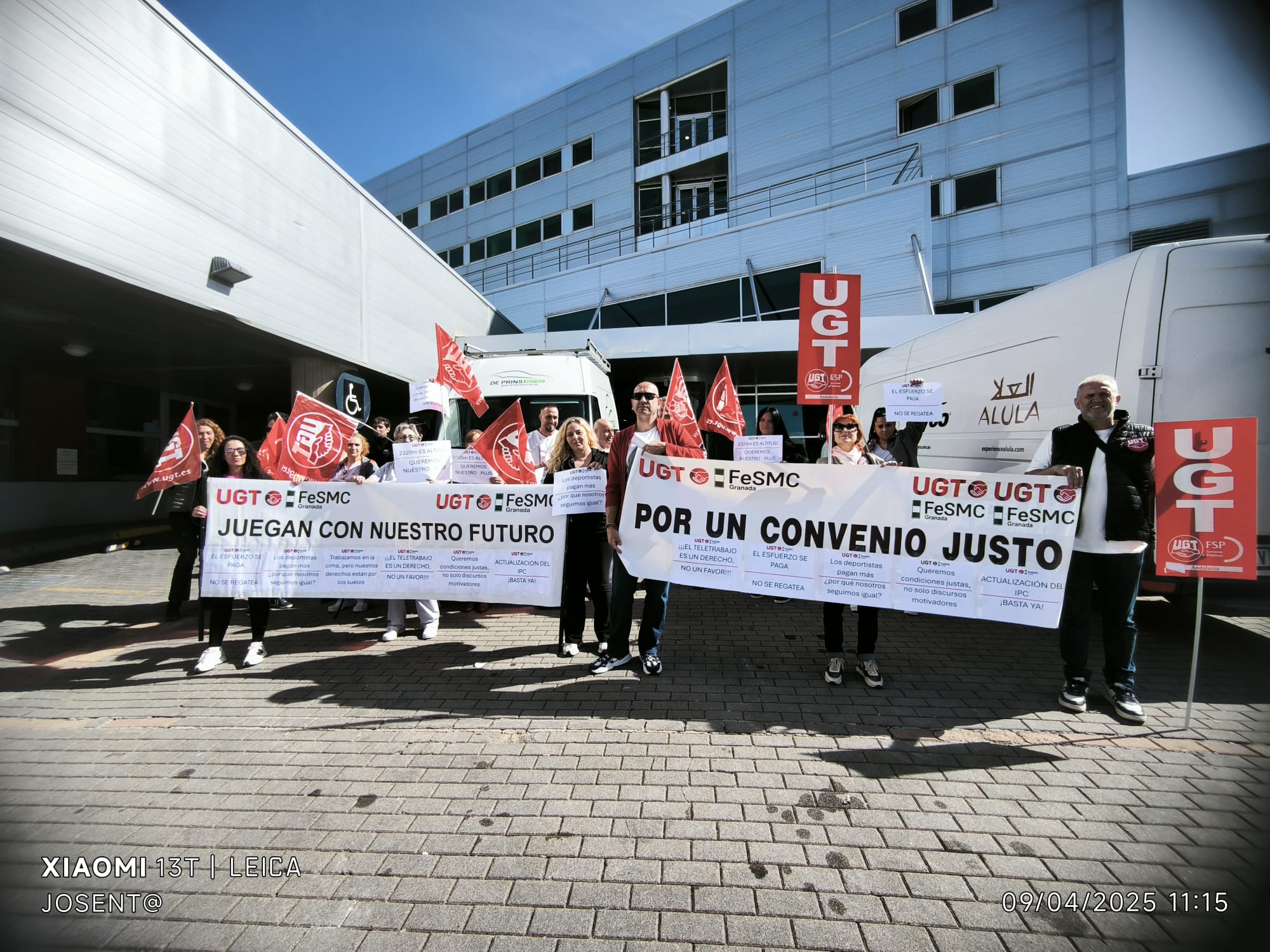
One of Spain's most important high-performance centres for athletes, used by dozens of cycling teams and riders for altitude training, faces a threat of strike action after trade union demands for improvement in workers' conditions.
The Union General de Trabajadores trade union has already organised one protest in April outside the Centro de Alto Rendimiento - High Performance Centre - in Sierra Nevada ski station in southern Spain. Another protest is planned for later this month.
Riders who have used the Sierra Nevada mountains for altitude training include Tadej Pogačar (UAE Team Emirates), Remco Evenepoel and other riders from Soudal-QuickStep, as well as World Tour teams like Ineos Grenadiers, Movistar, Decathlon AG2R La Mondiale, Jayco-AIUIa and Visma-Lease a Bike and other teams such as Tudor Pro Cycling.
Although not all riders are based in the CAR, as some opt to stay in private apartments, unofficial estimates say the number of athletes that stay in the high-performance centre has increased by at least 400% over the last ten years.
The protests are over the UGT's demands for an improvement in labour conditions for affiliated workers, including having to handle the daily effects of major altitude changes and cleaning staff working seven days a week.
Should the latest demands for negotiations fail to ease the tensions, as is currently the case, UGT representative Carlos Aranguren told Cyclingnews, "then we'll be going on strike in May, whatever happens."
Should the strikes take place, they could coincide with multiple professional cycling teams' high altitude training camps for the Tour de France in the second half of the month.
Aranguren claimed that the CAR management were refusing to give the workers any financial bonus to compensate for the effects of major changes of altitude each day.
The CAR is at 2,320 metres above sea level, nearly 1,600 metres higher than in Granada, the nearest big city where many workers live. He also said that for two years and over 15 meetings, all their proposals for a collective bargaining agreement had been rejected.
"We can't go on like this," Aranguren told Cyclingnews, "because in any negotiations there has to be give and take on both sides."
"In an ideal world we wouldn't have to suffer the effects of altitude like that, but that's not practical. The centre's up there specifically because of the altitude, but we have to head up there and back down every day."
"Some studies say one thing, others another, but it's clearly something that has an effect. You just have to take up a bottle of water from one height to another and bring it back down and you can see what happens to it. That pressure affects you and we deserve some kind of economic recognition for that."
For cyclists and other athletes who remained at altitude, "the effect is hugely beneficial, because they stay up there for much longer periods of time. But going up and down constantly has exactly the opposite effect on your health."
Apart from a big increase in numbers over the years, Aranguren said that May was also when the majority of bike riders began to train at altitude.
"Up to now they can use the indoor facilities we've got, but outdoors there's still a lot of snow. It's next month, when the snow melts, that that changes and you come across riders outside, training, almost every day."
"Cycling is one of our top sports, together with swimming. Even if riders aren't actually staying in the CAR, we get a fair number who stay in apartments, but come in each day to have meals in the dining room or to use the training facilities we've got."
May, too, is when the strikes will be taking place with the UGT workers if an agreement is not reached. But Aranguren is not optimistic, saying requests for even minimal bonuses to compensate for the altitude question had been rejected.
"We've got another protest on April 23 and then from May onwards, we'll have one or two days of strikes. But after that, they'll increase because we have to stop this, one way or another. At this rate, it's them [the employers] that'll be going up [to Sierra Nevada] every day."








